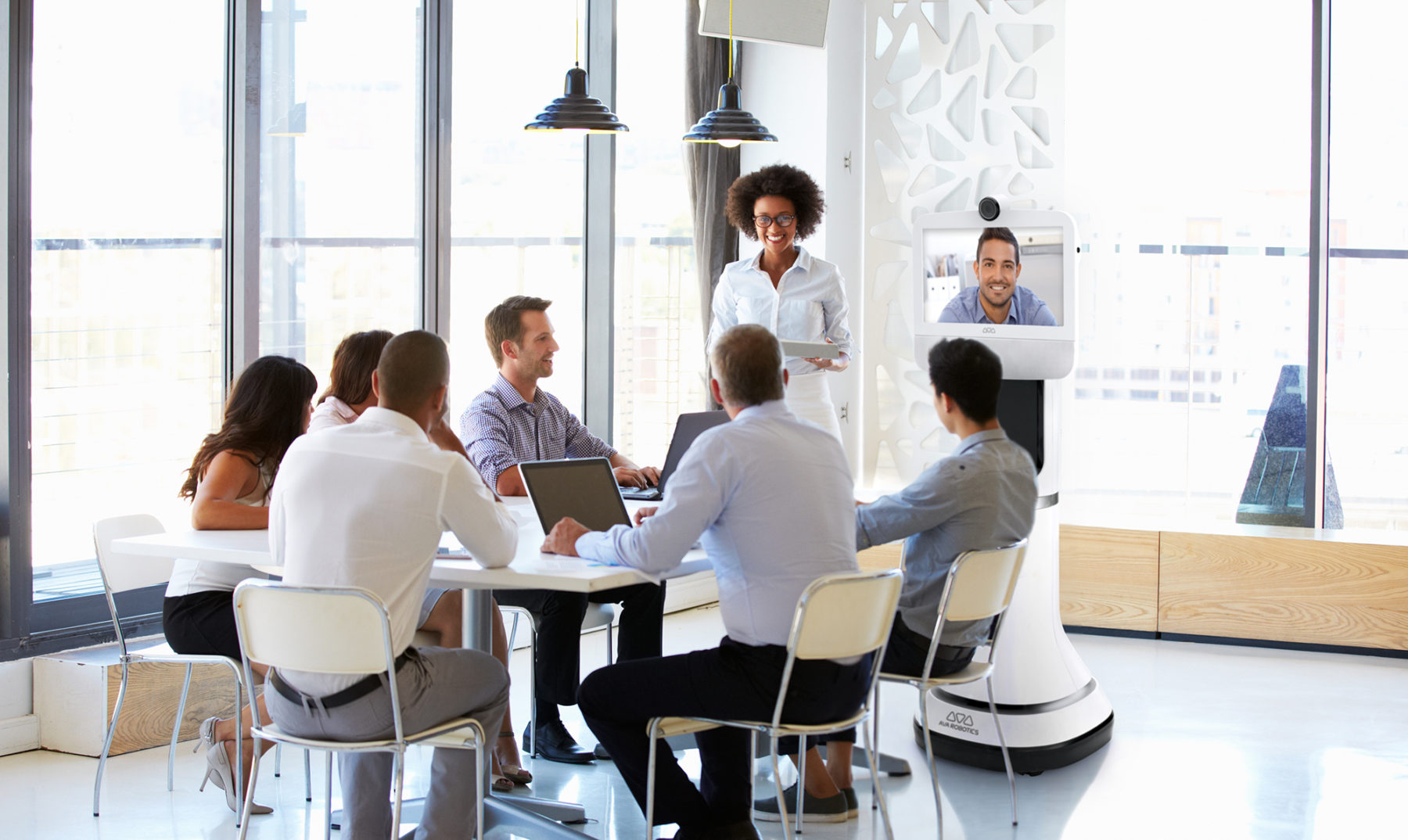Sasaki and Ava Robotics Talk Telepresence and Workplace

 Sasaki
Sasaki

At Sasaki, we’ve found tremendous benefit in having Ava Telepresence robots on site to help keep remote employees engaged in both spontaneous interaction around the office, as well as in more formalized group gatherings, like meetings and team pin-ups. Today, more than ever, we’re grateful for our autonomous support system.
Before the pandemic hit, remote team members were already using Ava to teleport in and collaborate with colleagues in the office. A mother out on maternity leave participated in a town hall meeting, asking questions as a part of the 300-employee audience, while holding her baby. A leader perpetually on the road participated in a pin-up to critique options alongside the rest of the team, despite being in another country. And a manager was able to, instead of “just checking in,” actually be with her team, while safely nursing a cold at home.
Our designers and Ava Robotics executives engage in a discussion of telepresence robotics and the future of workplace, moderated by Sasaki’s Chief Technology Officer. Watch Holly St. Clair, Rob Kutner, and Colleen Barrett delve into the value of integrating telepresence into daily work, the evolving definition of what “remote worker” means, and how design of workspaces will adapt to this change:
For a business like ours, one that depends on close collaboration — sketching, mapping, co-designing — to generate creative outputs, being in the room when key decisions are made, being able to chat with a senior leader on the way to the espresso machine, following up with a coworker when you bump into them in the hall, are all critical touchpoints where our remote colleagues want to have a voice. Ava empowers remote workers to do just that.
“Ava functions like a vessel. It’s not there to do the work for us. It’s there to literally channel our presence when we can’t be physically in the building,” says Sasaki senior associate and workplace designer Meredith McCarthy, AIA. “It’s one thing to be part of a video conference. It’s quite another to be able to engage in all the organic interaction and behind the scenes one-on-ones that happen in the office, where at least half of the critical engagement lies,” adds senior associate and workplace designer Colleen Barrett.
As companies everywhere anticipate and plan for welcoming their people back to the office in small numbers, and in staggered shifts, Ava robots can help transition to more flexible schedules and varying degrees of remote work.
“Things staying entirely remote for everyone isn’t permanent, but also expecting things to go back to old-normal isn’t realistic,” says Rob Kutner, Ava’s VP of Sales & Marketing. “Each business is going to have to test, learn, and discover the balance they need to strike with in-office and remote workers. Helping discover and establish this balance is a large part of what Ava does.”
Robots coexisting with people in the workplace, helping us do our work—it used to sound a bit futuristic, right? But this vision is already very real. A variety of robots are already enabling and assisting us with all kinds of work, across industries, employing AI and mechanizing processes, but also aiding with connectivity between humans like Ava does.
Marcio Macedo, with Ava, has created this new way of communicating remotely that still feels close to in-person interaction. McCarthy shares what it’s like to use Ava robots and how it differs from typical videoconferencing:
Ava Co-Founder and VP of Product, Marcio Macedo explains, “Culture was before, and will continue to be, the key driver for telepresence. Establishing culture and communicating value is a human process. Building a user-friendly physical and digital experience is compelling, but what really matters is safety, trust, and confidence for your people and workplace.”
And sooner than many may anticipate, our offices will be designed to optimize integration of telepresence robots in flexible ways. Workplaces will have more video conference options than just the traditional walled conference room. There may even be a few less enclosed spaces and a few more open collaborative areas that are now fully video capable thanks to mobile telepresence. Suddenly, the remote worker is no longer tied to a static location because of technology, but can move freely and with ease throughout the office like any other employee. Are there robot docking stations in the amenity spaces so you can grab a coffee with a remote worker and take your meeting in the cafe? Is there a series of open and flexible collaborative areas organized around another docking station so a conversation that’s already started and is gaining speed can be reminded to loop in a remote worker because they saw the robot nearby?
Kutner describes Ava as the next evolution of how we use technology. McCarthy explains how office design can adapt to various new technologies, like telepresence robots, as those technologies evolve into the future:
Questions like these are important as we imagine the future office. While large-scale design trends and considerations for workplace robots may be still in the discovery stage, many companies like Cisco, Steelcase, and long term care facilities across the US are already experiencing the connective benefits of autonomous robots joining their teams. With the ability to adapt to current office situations, no matter the layouts, Ava robots are on the move, creating new opportunities for us to effectively, and safely, work together.
Technology is not always easily adopted. How do you advise companies to integrate new technologies? Macedo weighs in:
Check out the full 25-minute discussion between our Chief Technology Officer, Holly St. Clair, and workplace designer and senior associate Meredith McCarthy, AIA, workplace designer and senior associate Colleen Barrett, Co-founder and VP of product of Ava Robotics, Marcio Macedo, and VP of Sales at Ava Robotics, Rob Kutner.